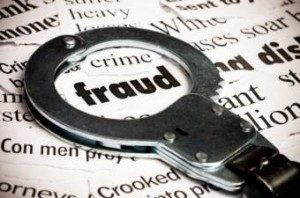 Mortgage application fraud risk decreased significantly in Q2 2019 from Q1 2019, according to the latest Mortgage Fraud Risk Index from CoreLogic. The Index fell from 152 to 132 quarter-over-quarter.
Mortgage application fraud risk decreased significantly in Q2 2019 from Q1 2019, according to the latest Mortgage Fraud Risk Index from CoreLogic. The Index fell from 152 to 132 quarter-over-quarter.
According to the report, New York, Florida, and New Jersey remained the top states for fraud risk. The top five states for fraud risk increases were Idaho, Alabama, Mississippi, New York, and Delaware.
According to Bridget Berg, Mortgage Fraud Solutions Principal at CoreLogic, the decrease in fraud risk may be temporary, based on unexpected interest rate drops and an influx of low-risk refinance transactions.
“The absolute number of risky loans did not decrease but is part of a larger mortgage market for now,” Berg said.
Undisclosed real estate debt fraud risk decreased the most year-over-year in Q2 2019. Corelogic defines undisclosed real estate fraud as when an applicant intentionally fails to disclose additional real estate debt or past foreclosures. During Q2 2019, this fraud type decreased by 12.8%. Despite the higher decrease, this fraud type is still one of the most common issues.
Overall, mortgage foreclosures have been shrinking, according to CoreLogic. The 30 days or more delinquency rate for June 2019 was 4%, while 4% of mortgages were delinquent by at least 30 days or more including those in foreclosure.
"A strong economy and eight-plus years of home price growth have made mortgage foreclosure an infrequent event,” said CoreLogic Chief Economist Frank Nothaft. “This backdrop will help the mortgage market limit delinquencies in most of the country whenever a downturn should start."
Despite delinquency rates sitting at their lowest levels since 1999, several states and metropolitan areas posted small annual increases in June. The highest gains were in Vermont (+0.7%), New Hampshire (+0.3%), Nebraska (+0.2%) and Minnesota (0.2%), while the other four states–Michigan, Iowa, Wisconsin and Connecticut–experienced a nominal gain of just 0.1%.
Property fraud, meanwhile, decreased by 9.9% year-over-year. Property fraud occurs when information about a property is intentionally misrepresented.

 DSNews The homepage of the servicing industry
DSNews The homepage of the servicing industry









